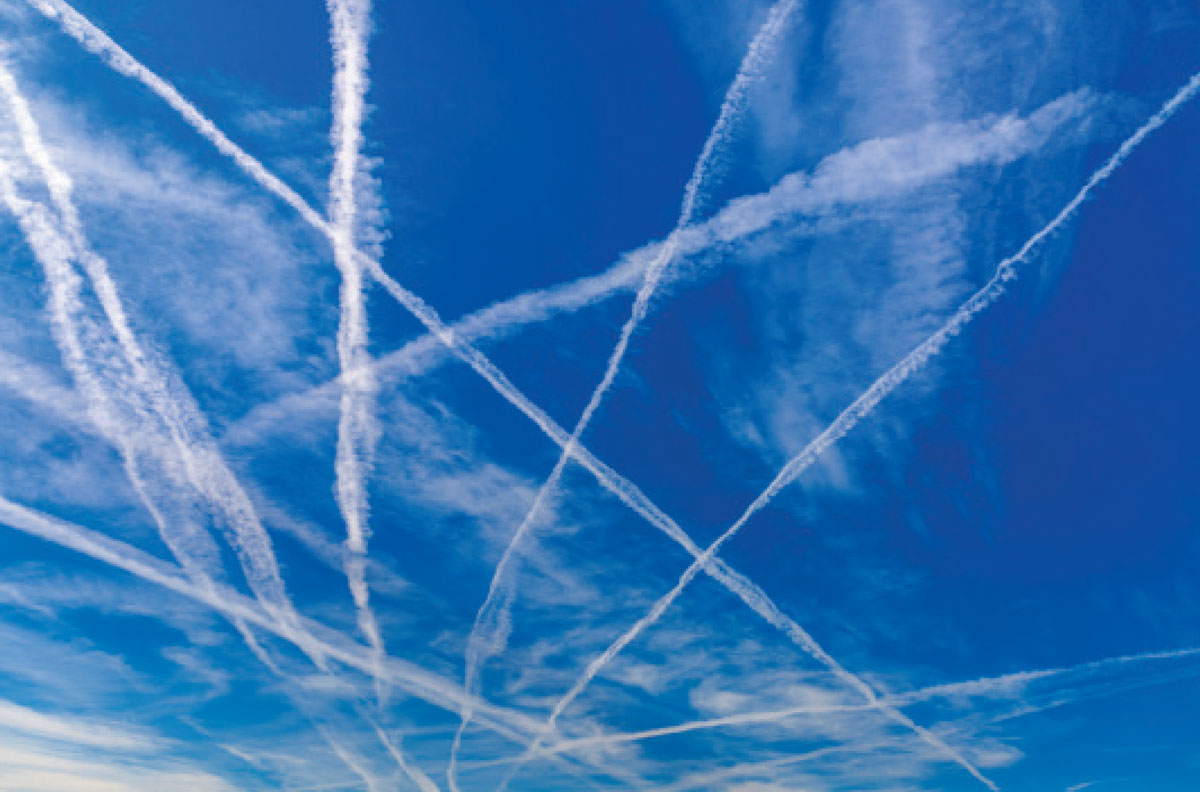Leftovers / Vapor Trails
Clouds and conspiracies
D. Graham Burnett
“Leftovers” is a column that investigates the cultural significance of detritus.
In early October 1918, a young American army captain named Ward Wells found himself bivouacking with his unit in a patch of forest a little northwest of Verdun, just as a tremendous bombardment up ahead shattered the bright autumn morning. He described what he saw in a from-the-trench letter to his brother back in Iowa:
Our attention was first drawn to the sky by the sudden appearance of several strange and startling clouds—long, graceful, looping ribbons of white. These were tapering to a point at one end, and at the other, where they dissolved into nothingness, 60 degrees across the sky, were about as broad as the width of a finger held arm’s distance from the eye.
He and his fellow doughboys had never seen anything quite like it, and they scrutinized the celestial calligraphy with squinting faces:
On close observation we noticed some distance ahead of each cloud point the tiny speck of a chasse plane. Apparently the churning of the air was all that was needed to upset the delicately balanced meteorological conditions and precipitate this strange cloud formation.
It was an astute interpretation of an as-yet untheorized bit of aerodynamics and atmospheric chemistry. Young Captain Wells, who had some scientific training, closed his letter with a poetic flourish:

I had seen ships leave their tracks in the clouds, similar to those of little sea animals in the wet sands at the shore, but never before had I seen a plane writing in white upon the blue slate of the sky.[1]
This was not, of course, “skywriting”—at least not in the conventional sense of an airplane making smoke intentionally for the purpose of inscribing messages in the air. Such skywriting did not yet really exist in its conventional form, and anyway the aces dueling for position over the battlefield had no time for playful tracery. What Ward Wells and his comrades witnessed on that otherwise cloudless morning was in fact one of the very earliest documented occurrences of a meteorological phenomenon now familiar to all of us—what have come to be called contrails, the streak-like white wisps that (sometimes) lace the sky where planes have passed.[2]
I turn my head right now and look out the window, and there are two of them overhead: one a loose and tufted relic, only distinguishable from the cirrus ribs with which it lies on account of a slight skew; the other presently streaming in fresh billows from a silver jet raking the cerulean vault.
What are contrails? Why do they form?